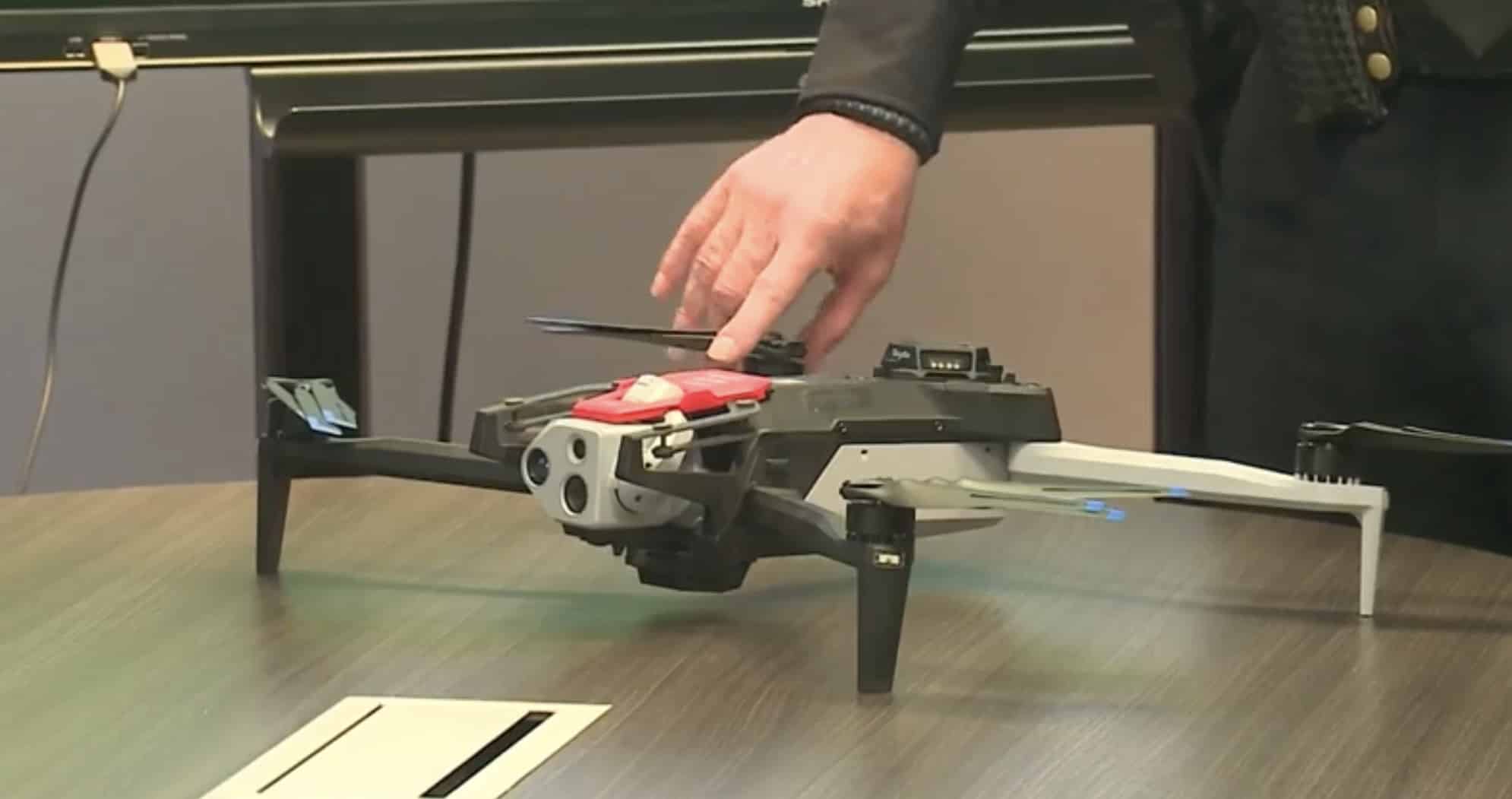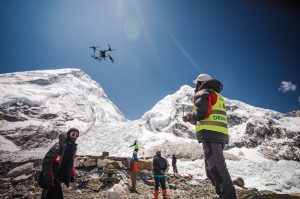Albuquerque Police Deploy Skydio Drones with Advanced Thermal Imaging to Combat Bosque Fires: A Deep Dive
The lush cottonwood forests of Albuquerque’s Bosque along the Rio Grande have always been a cherished local spot—a haven for wildlife, a site for family picnics, jogging routes, and a favorite backdrop for stunning sunset photographs. When a series of fires, suspiciously linked to arson, threatened this green sanctuary during the dry summer of 2025, the city not only responded with traditional firefighting methods but also deployed drones as high-tech sentinels in the sky. This is the narrative of how the Albuquerque Police Department (APD) harnessed the potential of advanced drone technology, equipped with sophisticated thermal imaging, to safeguard one of New Mexico’s most beloved environments and its inhabitants.
Why Drones? Why Now?
Before the integration of drones, patrolling the Bosque for fires was a labor-intensive and reactive endeavor. The dense vegetation and rugged terrain made it nearly impossible to spot minor fires until they escalated. To compound the challenge, resolving arson cases became increasingly complex, creating a scenario ripe for disaster.
However, technology stepped in as a game-changer—drones offered agility, extensive range, and next-generation sensors that could identify potential issues before escalation.
Meet the Fleet: Skydio Drones on the Frontline
Following two significant fires and a third incident on July 1, 2025, the APD introduced a lineup of ten Skydio drones, each valued at approximately $15,000. Although only one drone is flown at a time, their capability of covering areas within a range of 7-8 miles and reaching speeds of 45 mph allows comprehensive surveillance of the Bosque within minutes. The mission is clear—detect nascent fires and thwart prospective arsonists.
These drones surpass typical hobby models; they are fitted with top-tier thermal imaging cameras, specifically utilizing the Teledyne FLIR Boson+ radiometric thermal sensor, integrated into Skydio’s X10 line. This collaboration, branded “Thermal by FLIR,” ensures optimum uncooled long-wave infrared imaging within a compact, lightweight, and power-efficient framework, ideal for swift response in critical conditions.
The Science Behind Thermal Imaging: Seeing Fires Before They Spread
Thermal imaging doesn’t just enable “seeing in the dark”—it focuses on the heat emitted by various elements. When urgency is key, thermal cameras can identify a smoldering branch lurking beneath thick underbrush, long before any smoke is detected by the human eye or standard cameras.
The advantages offered by Skydio X10 drones include:
- Resolution: The cameras deliver up to 640×512 pixels—surpassing the resolution of previous drone thermal cameras by fourfold.
- Sensitivity: Detecting temperature variations down to 30 millikelvin, these drones can discern extremely minute temperature differences, crucial for early fire detection.
- Radiometric Data: Each pixel in the thermal images contains precise temperature values, aiding forensic investigators in understanding fire origins and pathways.
Thanks to these innovations, Mayor Tim Keller noted tangible outcomes: during the fire outbreak on July 1, “We deployed that sensor and detected a fire within ten minutes.” Swift detection is crucial—especially in an arid forest where winds can rapidly transform embers into infernos.
Integration with Existing Firefighting and Police Efforts
The drones are part of a broader, multi-layered strategy that includes:
- Heat sensors strategically positioned along key routes, such as Central, Rio Grande, and Rio Bravo, to enhance drone coverage with a real-time heat map of the Bosque.
- Real-Time Crime Center: The New Mexico National Guard, alongside the APD, monitors drone feed from this advanced hub.
- FAA Authorization: The APD operates the drones with full Federal Aviation Administration approval, ensuring compliance and public safety.
Even with just one drone aloft per session, these devices can reach any end of the Bosque within five minutes from a central launch point, eclipsing the response times of police vehicles or foot patrols.
Fighting Arson: Surveillance, Deterrence, and Investigation
The incendiary incidents of 2025 in the Bosque weren’t purely natural events—many fires were traced back to intentional criminal activity. High-profile apprehensions, like that of Sean Taylor in June, became entangled in legal complexities, with some prosecutions dismissed due to insufficient evidence.
Drones, however, offer a solution. Equipped with high-resolution thermal and optical cameras, they not only detect fires but also conduct surveillance for suspicious actions, collect aerial evidence, and direct officers to potential crime scenes. As Police Chief Harold Medina articulated, the department is keen on “swiftly identifying fire occurrences, locating individuals nearby, and directing officers to those suspects potentially responsible for crimes.”
This isn’t solely about apprehending offenders; it’s about deterrence. Awareness of constant aerial surveillance might deter would-be arsonists. Drones serve as both a preventative measure and a rapid-response instrument.
From Battlefield to Backyard: The Evolution of Thermal Drone Tech
Until recently, such advanced aerial thermal imaging was confined to military and high-budget emergency operations. Now, thanks to partnerships like Skydio and FLIR, public safety entities—from major cities to smaller municipalities—can access this technology.
Technological upgrades in 2024 and 2025 rendered drones smaller, lighter, and increasingly autonomous. Machine learning capabilities filter out false alarms (e.g., distinguishing a sunbathing turtle from a glowing ember). The drones’ adaptive bitrate streaming ensures real-time, stable video transmission, even in dense foliage or cellular dead zones.
Community and Environmental Impact: More Than Fighting Flames
The Bosque holds a special place in the hearts of many in Albuquerque. Its preservation is intimately personal. The drone initiative exemplifies a community-centric technological approach:
- Environmental Monitoring: Beyond fire surveillance, drones record wildlife patterns and ecological changes, offering invaluable insights for ecologists.
- Public Engagement: The city actively involves the community, providing public demonstrations and maintaining transparency about data usage and privacy.
- Inter-agency Collaboration: Seamless cooperation between fire, police, and National Guard ensures efficient data sharing across departments.
And humorously, local memes have emerged about “Sky Cops” and “Drone Rangers.” As one local quipped, “It’s like having R2-D2 equipped with a fire hose up there.” Humor aside, these drones are effectively conserving both natural spaces and taxpayer resources.
Rules, Regulations, and Ethics: Flying Right
Thinking of flying your own drone over the Bosque? Think again! The APD’s drone operations carry full FAA authorization. Private drones, especially those flown by unlicensed operators, face harsh penalties to ensure safety and avoid disruptions to emergency operations.
For aspiring drone pilots, New Mexico mandates a Part 107 drone license for commercial use and enforces strict guidelines about permissible flight locations and times. The APD’s transparent communication, consistent reporting, and public Q&As have been pivotal in addressing privacy concerns and building community trust.
What’s Next? The Future of Drone-Enabled Safety
The Albuquerque drone program, already a case study for other Western cities, hints at the future of public safety:
- Smarter Drones: AI-enhanced pattern recognition to track unauthorized fires or suspicious activities.
- Accelerated Response: Automated “launch on alarm” systems where detected heat triggers immediate drone deployment.
- Community Data: Real-time dashboards enabling residents to access the same fire-risk data as first responders.
While technology will continue to advance, one fact remains clear: In Albuquerque, drones have become integral partners in the mission to extinguish wildfires and protect natural habitats.
Final Thoughts: Trust the Tech, Trust the People
Drones have transitioned from science fiction fantasies to essential elements of public safety strategies. Albuquerque’s experience underscores a narrative of resilience, technological innovation, and community collaboration. Under the vigilant eyes and ears of drones, the Bosque enjoys enhanced protection, shaping a safer future for the city.
So the next time you’re walking through the Bosque and hear a gentle drone overhead, remember: It’s not an Orwellian monitoring—but a modern neighborhood watch, merging cutting-edge technology with traditional protective spirit, all committed in the service of safety.
Stay safe, and may your campfires always stay within the designated fire pits.













